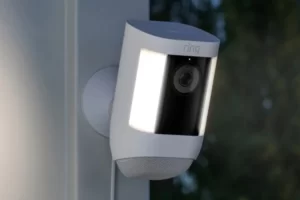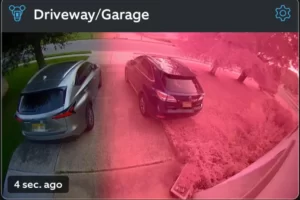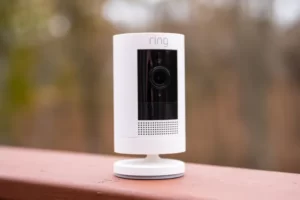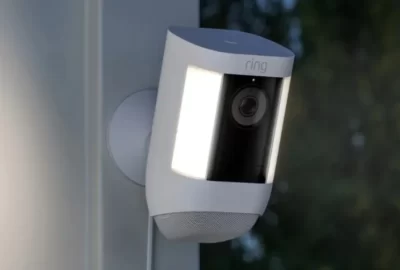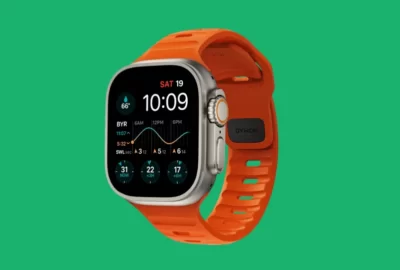Can a Thermal Camera See Through Walls?
Thermal imaging uses infrared radiation and thermal energy to obtain information about an object and then create an image of the object. Some people use it for night vision, military tactics, and other uses, like at home. At home, it is used to check for possible leaks or missing insulation. Pest control companies may use it to spot termite activity. Can thermal imaging penetrate walls? Read on to find out can thermal imaging penetrate walls.
How Does Thermal Imaging Camera Work?

Thermal imaging cameras, also known as thermal cameras, also known as infrared cameras or infrared cameras, render infrared radiation into visible light. In short, these powerful devices can detect heat. Specifically, they detect heat when it bounces off an object. So any thermal energy behind the wall bounces off that side instead of going through the wall, but in some cases, thermal cameras can see the heat on the wall where the heat source is on the other side.
Can Thermal Cameras See through Walls?
No. No thermal cameras can see through walls or any solid objects. A common misconception is that thermal cameras only see heat and nothing else. So if there is a heat source behind a wall or solid object, it should be able to absorb the heat. Fortunately, this is not the case, as only the heat on the surface is captured by any thermal camera. Still confused?
Why Need To Know If Thermal Imaging Cameras Can Penetrate Walls
Now you might be thinking, if seeing the heat is as easy as using your hands, then why would I need to spend money on this device? You’re not wrong to think that way but consider my leak analogy. How often do you touch the ceiling or walls to check for temperature changes? Even then, when the damage is small at the beginning, the small changes in temperature may be so small that you won’t notice.
This is where thermal imaging really shines. It’s so sensitive that tiny temperature changes will be as clear as day. Locating leaks and abnormal temperatures early is critical to saving the system and preventing further damage.
Also, assuming you have the slightest sign of a leak, where would you start opening a circuit board or punching a hole in the wall to find overheating electrical components? Thermal cameras will point you in the right direction, saving you time and money.
Can It Let You See Through Walls?
When we use the language “see”, we are referring to the ability of our eyes to observe the world in which we live. Mountains, leaves, etc. We love vintage cameras because they accurately represent the world around us. A world that relies on visible light.
But thermal cameras don’t work that way. It cannot see what our eyes can see. Instead, it detects the surrounding heat – personalized as a heat signature. So when you look at a thermal imager, the picture that thermal imaging produces, you see colors that represent the various thermal energies in its environment.
So what a thermal camera sees is not what a normal camera sees. In its world, an object is defined by how much heat it emits. As such, it can only record thermal energy bouncing off objects in front of it.
So when scanning a wall, the thermal camera detects the heat bouncing off the wall. It can be said that the surface temperature of the vertical barrier changes. So if something very hot, like a fire, is behind that wall, the heat from the fire will be recorded on that wall. A thermal imager will see it. The resulting heat from that proverbial fire can be seen on a thermometer.
Strictly speaking, infrared can only detect thermal signatures on its front surface. So the answer to this layman’s question is a resounding no. It’s just because the question is asked from the same perspective as humans. However, from a thermal camera point of view, we can say that it can see through walls. The answer is yes. This is because it can detect the heat behind the wall that affects the wall. Again, this refers to the fact that heat is the language of thermal imaging. Rather than the beautiful landscapes, we look for in traditional pictures.
Areas That Thermal Imaging Cameras Can See

Fog – These cameras can also observe fog. Some automakers use it on their cars to navigate through the fog.
Smoke – Firefighters use these cameras to detect heat in smoke. This helps them find people or pets that may be inside the building due to the heat emitted by the human body.
Rain/Snow – The camera can see rain and snow within a certain range, but it depends on the severity.
Metals – This can be tricky because the camera can pick up shiny metals and reflect the radiation even without a problem. Also, thermal cameras can never “penetrate” metal objects, but some metals may show hot or cold spots or something inside a metal container.
Forest or woods – The camera will not capture the trees in the forest or woods, but will capture a person because the body emits heat. Search and rescue teams and police use this tool to find missing or “related people” in the woods.
Areas That Thermal Imaging Cameras Can’t See
Plastic – Thin plastic, such as a plastic wrap, allows heat to radiate through a warm object. However, thicker plastic will not allow it to pass through and will block infrared radiation.
Glass – Unfortunately, thermal imaging cameras cannot see through glass. Instead, it’s highly reflective, reflecting back the image on the other side of the glass. For example, if you are standing on the side of the glass, point the IR camera at the glass. It’s reflected back to your body, not to what’s on the other side of the glass.
Conclude
Can a thermal imager see through walls? Thermal imaging cannot penetrate walls but can detect heat near surfaces. However, keep in mind that infrared cameras, by their nature, only see thermal signals. Unlike normal cameras. So, if you rephrase the question as: Can a thermal imaging device see the heat behind a wall? The answer is entirely possible. As long as the heat signal is strong enough to affect the surface temperature of a particular wall.
All of this underscores again how thermal cameras can make a huge difference in our daily lives – with or without walls.
Read Next: How To Turn Off Ring Camera?


